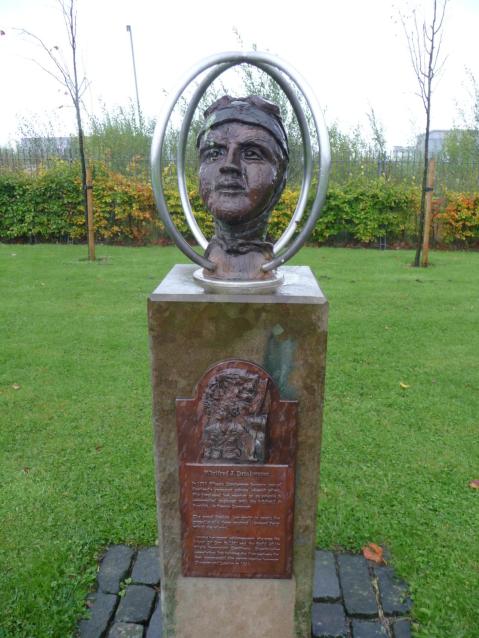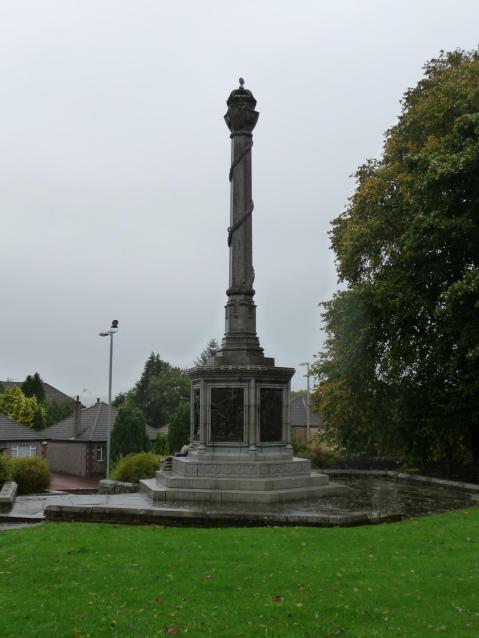A cycle in the rain
Well it’s quite a while since my last post on here. I’m afraid to say I have been guilty of not following the advice of this blog’s title, but last weekend I rectified this, at least a little bit anyway. Despite the rain I went out for a cycle and looked at some of the sights that are close to where I stay.
Only a mile or so from where I live is the Erskine Bridge. This was opened by HRH Princess Anne in 1971. It is 38m (125 feet) high and the total length is 1310m (4300 feet). Back in 1996 a newly constructed oil platform that was being towed down river collided with the deck of the bridge, causing damage which cost almost £4m to repair.
Just a couple of miles from the Erskine Bridge is the beautifully renovated India of Inchinnan building which is Category A listed.
The land this sits on was originally used by William Beardmore & Company for the construction of airships from 1916 until the factory closed in 1922. In 1927 the site and some of the buildings were bought by India Tyres. The art deco style office block was opened in 1931 and lasted until 1981 when the company closed and left the area. Sadly the vacant building was left a tattered shell for many years after it was vandalised and set on fire. The building was built many years later by a local engineering firm and the transformation was completed in 2003. The roof extension to the rear of the building is a scale replica of a section of an R34 airship, paying respect to the site’s heritage.
Travelling along the A8 road to Renfrew. The town is known as the Cradle of the Royal Stewarts due to it’s links to the Royal House and it also has the designation of Royal Burgh. The current Baron of Renfrew is HRH Prince Charles. Entering from the west you have to cross over the bascule bridge. This is a drawbridge style bridge and was completed around 1923. Although the bridge has been renovated and is fully operational it very seldom opens.
In Renfrew there is an area called Braehead which in recent years has seen much development, both commercial and residential. Between the two areas is Clyde View Park. As well as being a greenspace with play/picnic areas, fountains and the riverside walkway, there are a number of sculptures showing the history and importance of the area.
This sculpture represents the importance of the Stewart monarchy and their links to the area.
St Conval was a major founder of monasticism in the British Isles and 300 years after his death, monks based at Inchinnan founded many churches which bore his name. The Lord of the Isles, Somerled, landed at Renfrew in 1164 to try to control the seaways but was attacked and killed by a group of locals, thus ending the Norse influence on the River Clyde.
This sculpture is a reference to the industrial progress made in the area. Developments in engine technology greatly influenced the progress of paddle steamers, then propeller driven ships and even onto aeroplanes. The local Beardsmore’s factory made bi-planes, including the Sopwith Pup during the First World War.
Simons and Lobnitz were two companies who were worldwide leaders in dredging technology in the 19th Century. Dredging the river to maintain the navigational channels was of utmost important to the shipbuilding industries on the Clyde.
The R34 was a hydrogen airship built by the Beardsmore company of Inchinnan in 1919 which was acclaimed for crossing the Atlantic twice. The India Rubber Co. made tyres on the same site as Beardsmore’s for over 50 years playing an important role during World War 2.
Babcock began as boiler makers and opened their factory in Renfrew in 1895. Babcock and Wilcox designed and built engineering equipment from nuclear power staions to marine salvage equipment.
The 602 (City of Glasgow) Squadron of the Royal Auxiliary Air Force were based at the Moorpark Aerodrome in Renfrew. Started as a light bomber unit they became a fighter squadron flying Spitfires and were temporarily re-located in England during the Battle of Britain. The squadron was disbanded in 1957 and later reformed in 2006 to provide operational support.
In 1930 Winifred (Winnie) J. Drinkwater qualified as one of Scotland’s youngest private aircraft pilots. In 1934 she flew what is considered the first day return service between Glasgow and London.
Connecting to Renfrew is the town of Paisley. During the 19th Century Paisley was a major player in the weaving industry, working with cotton and wool and producing shawls and other fabrics in the famous Paisley Pattern.One of the most iconic buildings in the town is the Anchor Thread Mill. By the late 19th Century the J & J Clark Company employed over 3500 people producing 15 tons a day. As you can see in the picture after the heavy rain we had the White Cart Water can get a bit lively.
Just across from the Anchor Mill sits Paisley Abbey. The original priory on the site was upgraded to Abbey status in 1219 due to the rapid growth of the local community. King Robert II was born in the Abbey after his mother, who was horse riding nearby, fell from her horse. All six High Stewards of Scotland are buried in the Abbey.
Finally, moving out of Paisley, you will come to Elderslie, where it is said our very own Braveheart, Mel Gibson, sorry, William Wallace was born. In the village you’ll find the Wallace Memorial, not to be confused with the Wallace Monument in Stirling. Built in 1912 the column is carved from a single piece of stone. Around the base are panels depicting important events from Wallace’s life.
















